Expat Costa Rica Starter Guide
Welcome to Your Expat Journey
Whether you’re curious, committed, or already packing your bags, this guide will help you take the first confident steps toward becoming a Costa Rica expat. It’s written for people who want practical, honest, and clear information without hype or sugarcoating
1. Top Regions for Expats
Guanacaste Province
🌴 Tamarindo
Exact Beach Location: Playa Tamarindo on the northern Pacific coast of the Nicoya Peninsula
Distance to International Airport: ~1 hour 15 minutes from Daniel Oduber Quirós International Airport (LIR) in Liberia
Nearby Beaches/Towns: Playa Langosta, Playa Grande, Playa Avellanas, Hacienda Pinilla, Villarreal, Huacas, Playa Flamingo, Brasilito
Climate:
Seasons: Dry season (Dec–Apr), Rainy season (May–Nov)
Average Daytime Temperature: 85–95°F (29–35°C)
Average Nighttime Temperature: 72–77°F (22–25°C)
Rainfall: ~50–65 inches/year (~1,270–1,650 mm)
Hot and dry much of the year with intense sunshine and low humidity in the dry season. Afternoon showers are common in rainy months, especially Sept–Oct.
Best for: Surf, social life, and digital nomads
Tamarindo is one of Costa Rica’s most iconic beach towns and a favorite for digital nomads and surfers alike. It sits on a wide, golden beach with warm waves and vibrant sunsets nearly every evening. Whether you're riding waves in the morning or working from a beachfront café in the afternoon, Tamarindo blends lifestyle and convenience in a way that’s hard to beat.
It’s a lively town, full of international restaurants, wellness centers, boutique hotels, and plenty of nightlife. The infrastructure is quite developed for a coastal town: you’ll find reliable internet, bilingual schools, and medical services. The town is also a great launchpad for exploring other nearby beach spots like Avellanas, a haven for serious surfers, or Playa Flamingo, with its upscale vibe and new marina.
Even with its popularity, you can still find pockets of calm just outside of town—like Playa Langosta, which offers a quieter, more residential atmosphere. Tamarindo is ideal if you're looking for a vibrant beach lifestyle with modern comforts.
Cost of Living: 💵💵💵 High
Tamarindo is one of the pricier places to live in Costa Rica. One-bedroom apartments close to the beach can cost anywhere from $1,200 to $2,000/month. Expect higher prices for dining out, groceries, and imported goods. You’ll want a monthly budget of at least $2,500–$3,500 for a comfortable lifestyle here.
Plan a Visit to Tamarindo:
Before committing to a move, spending a week in Tamarindo gives you firsthand insight into daily life in this vibrant surf town. From walkable neighborhoods to grocery runs and beach sunsets, you'll discover whether this energetic blend of locals and expats fits your rhythm.
🏖️ Playas del Coco
Exact Beach Location: Playa del Coco on the Gulf of Papagayo
Distance to International Airport: ~30 minutes from Daniel Oduber Quirós International Airport (LIR) in Liberia
Nearby Beaches/Towns: Playa Ocotal, Playa Hermosa, Playa Panama, Playa Buena, Sardinal, Liberia, Playa Matapalo
Climate:
Seasons: Dry season (Nov–Apr), Rainy season (May–Oct)
Average Daytime Temperature: 84–93°F (29–34°C)
Average Nighttime Temperature: 73–76°F (23–24°C)
Rainfall: ~45–60 inches/year (~1,140–1,520 mm)
One of the driest coastal towns in Costa Rica. The dry season is sunny and ideal for beach living; the rainy season is mild until September and October.
Best for: Retirees, boaters, and coastal convenience
Playas del Coco, or simply "Coco," is one of the closest beach towns to Liberia Airport—making it incredibly convenient for frequent travelers. Nestled in a calm bay along the Gulf of Papagayo, its beach is perfect for boating, paddleboarding, or just lounging by the water with a cold drink in hand.
The downtown area is flat and walkable, filled with seafood restaurants, local shops, and beach bars. For those who prefer quieter surroundings, you’ll find hillside communities with ocean-view condos, perfect for sunsets. And with Playa Ocotal and Playa Hermosa just a short drive away, there’s no shortage of places to explore.
Coco is a favorite for retirees and snowbirds thanks to its growing healthcare options, supermarkets, and active social scene. Whether you're hosting a BBQ with your neighbors or hopping on a boat for some deep-sea fishing, Coco offers an easygoing lifestyle with all the amenities you need.
Cost of Living: 💵💵 Moderate
Playas del Coco strikes a good balance between affordability and convenience. Rentals typically range from $800–$1,500/month. You’ll find local produce and supermarkets that help keep costs manageable. A solid monthly budget here might range from $2,000–$2,800 depending on your lifestyle.
Plan a Visit to Coco:
Coco offers one of the easiest transitions into Costa Rica. Visiting in person lets you explore its accessible beaches, lively expat social scene, and proximity to Liberia Airport. It’s the perfect place to experience life with convenience and community.
👉 Plan a Visit to Playas del Coco →
🐢 Sámara
Exact Beach Location: Playa Sámara on the southern Pacific edge of the Nicoya Peninsula
Distance to International Airport: ~2 hours 15 minutes from Daniel Oduber Quirós International Airport (LIR) in Liberia
Nearby Beaches/Towns: Playa Carrillo, Nosara, Playa Camaronal, Nicoya
Climate:
Seasons: Dry season (Dec–Apr), Rainy season (May–Nov)
Average Daytime Temperature: 83–92°F (28–33°C)
Average Nighttime Temperature: 70–75°F (21–24°C)
Rainfall: ~60–80 inches/year (~1,520–2,030 mm)
A bit more humid and green than northern Guanacaste. The rainy season brings vibrant vegetation and occasional evening rain.
Best for: Families, quiet beach life, and relaxed living
Sámara is one of those hidden gems where time seems to slow down. Tucked into a sheltered bay and protected by a reef, its calm waters make it ideal for swimming, kayaking, and safe beach time with kids. It’s a favorite for families, retirees, and anyone who values tranquility.
Though smaller than Tamarindo, Sámara has a surprisingly vibrant community. You'll find language schools, wellness centers, live music, and beachside dining, all wrapped in a low-key vibe. Locals and expats mix easily here, and it's common to see surfers, school kids, and farmers’ market shoppers mingling in the plaza.
Nearby, Playa Carrillo is one of the prettiest beaches in Costa Rica—lined with palm trees and completely undeveloped. A short drive to Nosara gives you access to a more robust wellness and surf scene. Sámara is perfect for those looking to live simply but beautifully.
Cost of Living: 💵💵 Moderate
Sámara is budget-friendly compared to more touristy towns. A one-bedroom rental typically runs $700–$1,200/month. If you cook at home and shop at local markets, monthly costs can stay under $2,200. It's a great value for the tranquility you get.
Plan a Visit to Samara:
Samara’s relaxed charm and stunning coastline attract many who want a low-key beach life. Spend a few days here to feel the community vibe, visit local markets, and experience life with your toes in the sand.
Alajuela Province
🌋 La Fortuna / Arenal
Exact Location: Inland, at the base of Arenal Volcano in northern Costa Rica (not on the coast)
Distance to International Airport: ~2.5 hours from Juan Santamaría International Airport (SJO) in San José
Nearby Towns: El Castillo, Nuevo Arenal, San Carlos
Climate:
Seasons: Dry season (mid-Dec–Apr), Rainy season (May–Nov)
Average Daytime Temperature: 75–90°F (24–32°C)
Average Nighttime Temperature: 65–72°F (18–22°C)
Rainfall: ~140–180 inches/year (~3,500–4,500 mm)
La Fortuna has a humid tropical rainforest climate, which keeps the landscape lush and green year-round.
Best for: Nature lovers, hot springs, and wellness seekers
If you're more into volcanoes than beaches, La Fortuna could be your paradise. Set against the dramatic backdrop of Arenal Volcano, this lush inland town is packed with natural hot springs, waterfalls, and jungle trails. It’s perfect for nature lovers and adventure seekers.
La Fortuna isn’t as popular with full-time expats, but it’s growing in appeal, especially for those looking for a more affordable, tranquil, and eco-friendly way of life. You’ll find everything from simple homes to boutique eco-lodges, often with views of Arenal Volcano. Plus, Lake Arenal is nearby for paddleboarding, windsurfing, or just enjoying a breezy mountain escape.
It’s not a beach destination, but if you value greenery, and endless adventure, La Fortuna has a charm that coastal towns can’t match. With health clinics and services in nearby towns like San Carlos, you’re not isolated—you’re just blissfully unplugged.
Cost of Living: 💵 Low to Moderate
La Fortuna offers great value, especially for those looking for affordability. Rentals can start as low as $500/month, with $1,000–$1,500 providing a very comfortable lifestyle. Dining out and fresh produce are inexpensive. Monthly budgets often fall between $1,500–$2,200.
Plan a Visit to La Fortuna & Arenal:
La Fortuna, nestled at the base of the majestic Arenal Volcano, is one of Costa Rica’s most awe-inspiring destinations. It’s a paradise for nature lovers and adventure seekers, offering hot springs, waterfalls, and rainforests right at your doorstep. As a future expat, visiting La Fortuna lets you experience its laid-back lifestyle, warm community, and the peaceful rhythm of small-town living surrounded by lush natural beauty.
👉 Plan a Visit to La Fortuna & Arenal →
🌄 Central Valley (Atenas, Grecia, San Ramón, Escazú)
Exact Location: Inland, just west of the capital city of San José
Distance to International Airport: ~30–60 minutes from Juan Santamaría International Airport (SJO) depending on the town
Nearby Towns: Naranjo, Palmares, Heredia, Alajuela
Climate:
Dry season (Dec–Apr), Rainy season (May–Nov)
Average Daytime Temperature: 72–82°F (22–28°C)
Average Nighttime Temperature: 60–68°F (16–20°C)
Rainfall: ~60–100 inches/year (~1,500–2,540 mm), depending on altitude
The Central Valley enjoys one of the most comfortable climates in the world.
Best for: Long-term living, healthcare access, and mild weather
The Central Valley is Costa Rica’s heartland and home to the majority of its population. Towns like Atenas and Grecia are favorites among expats for their “eternal spring” climate, while San Ramón offers a more artsy, traditional Costa Rican feel. Escazú, on the other hand, is upscale, modern, and almost a suburb of San José, filled with international schools, malls, and private clinics.
This region isn’t about the beach—it’s about everyday living. You’ll find top hospitals, universities, shopping centers, and vibrant weekly markets. Many residents here own homes with lush gardens and sweeping valley views. It’s ideal if you’re looking for stable infrastructure, affordable healthcare, and year-round moderate temperatures without humidity.
Cost of Living: 💵💵 Moderate
You can live well on $1,800–$2,500/month depending on the town. Rents vary: in Atenas or Grecia, a nice 2-bedroom home might be $800–$1,200/month. Escazú is more expensive—closer to $1,500–$2,500/month—but offers luxury amenities in return.
Plan a Visit to the Central Valley:
The Central Valley is the heart of Costa Rica’s everyday life, offering a comfortable climate, excellent healthcare, and diverse communities ranging from quiet mountain towns to upscale suburbs. Spending time here before you move allows you to explore its unique neighborhoods, experience local culture, and get a real feel for what day-to-day life will be like. Whether you’re drawn to the peaceful hills of Atenas or the vibrant city vibe of Escazú, visiting will help you make an informed decision for your future home.
👉 Plan a Visit to the Central Valley →
Puntarenas Province
🏝️ Jaco
Exact Beach Location: Playa Jacó on the Central Pacific Coast
Distance to International Airport: ~1.5–2 hours from Juan Santamaría International Airport (SJO) in San José
Nearby Beaches/Towns: Playa Herradura, Playa Hermosa (Central Pacific), Tarcoles, Esterillos Oeste
Climate:
Dry season (Dec–Apr), Rainy season (May–Nov)
Average Daytime Temperature: 82–90°F (28–32°C)
Average Nighttime Temperature: 72–76°F (22–24°C)
Rainfall: ~100–120 inches/year (~2,540–3,050 mm)
Best for: City energy with beach access
Jacó is Costa Rica’s most urbanized beach town, offering a vibrant mix of convenience and coastal living. It’s a place where you can surf in the morning, work remotely with high-speed internet in the afternoon, and enjoy lively nightlife or a beachfront sunset in the evening. With paved roads, shops, and a wide variety of dining and entertainment options, Jacó provides the energy of a small city while keeping you just steps away from the beach.
Jacó attracts a diverse mix: digital nomads, surfers, retirees, and weekenders from San José. The beach itself is long and perfect for surfing, though the water is a bit rougher for casual swimmers. Playa Hermosa nearby is quieter and more scenic, while Herradura has a high-end marina and golf resort feel.
Cost of Living: 💵💵 Moderate to High
A one-bedroom rental ranges from $900–$1,800/month depending on proximity to the beach and season. Groceries and services are affordable, but dining and nightlife can add up. Expect to budget around $2,200–$3,200/month for a comfortable lifestyle.
Plan a Visit to Jacó
Jacó is Costa Rica’s most urban beach town—just 1.5 to 2 hours from San José—and offers a unique blend of coastal living and city-style convenience. Visiting Jacó gives you a firsthand look at its surf-friendly beach, vibrant nightlife, walkable streets, and growing digital nomad and expat community. It’s the perfect spot to see if fast-paced beach life with modern amenities fits your lifestyle.
🐒 Quepos / Manuel Antonio
Exact Beach Location: Playa Espadilla (Manuel Antonio), Central Pacific Coast
Distance to International Airport: ~2.5 hours from Juan Santamaría International Airport (SJO)
Nearby Beaches/Towns: Playa Biesanz, Playa La Macha, Parrita, Naranjito
Climate:
Dry season (Dec–Apr), Rainy season (May–Nov)
Average Daytime Temperature: 80–90°F (27–32°C)
Average Nighttime Temperature: 70–75°F (21–24°C)
Rainfall: ~120–160 inches/year (~3,050–4,060 mm)
This region is part of the tropical rainforest zone. It’s hot, humid, and green year-round. The rainy season is marked by heavy but predictable afternoon showers. Dry season brings clear skies and lower humidity.
Best for: National park access, tourism income, and lush coast living
Manuel Antonio is home to Costa Rica’s most famous national park—and for good reason. Monkeys swing through the treetops, sloths lounge in the canopy, and postcard-perfect beaches curve along the lush rainforest. Quepos, just downhill, is the practical town where many expats live. It has shops, clinics, and a modern marina.
Manuel Antonio is more boutique, perched on hills with ocean-view villas, eco-lodges, and a steady stream of tourists. The whole area is a dream for those who love wildlife and scenery but still want access to restaurants, spas, and community.
Cost of Living: 💵💵💵 Moderate to High
Housing in Manuel Antonio is on the pricier side, with rentals often $1,200–$2,000/month. Quepos offers more budget-friendly options ($800–$1,300). A comfortable monthly budget falls between $2,200–$3,200 depending on your lifestyle and whether you own or rent.
Plan a Visit to Quepos & Manuel Antonio
The Quepos–Manuel Antonio area offers a stunning blend of jungle, coastline, and community. Quepos serves as a practical base with walkable streets, local markets, and a marina, while nearby Manuel Antonio draws visitors with its famous national park, wildlife, and hilltop ocean views. Visiting this area allows you to experience both the local flavor of Quepos and the natural beauty of Manuel Antonio. It’s a great way to explore how tourism, nature, and expat living all come together in one place.
👉 Plan a Visit to Quepos & Manuel Antonio →
🐋 Costa Ballena (Dominical, Uvita, Ojochal)
Exact Beach Location: Southern Pacific Coast (Playa Dominical, Playa Uvita/Whale Tail, Playa Ventanas)
Distance to International Airport: ~3.5–4 hours from Juan Santamaría International Airport (SJO) or 3 hours from Quepos regional airport
Nearby Towns: Bahía, Tres Ríos, San Buenas, Palmar Norte
Climate:
Dry season (Dec–Apr), Rainy season (May–Nov)
Average Daytime Temperature: 78–88°F (26–31°C)
Average Nighttime Temperature: 68–74°F (20–23°C)
Rainfall: ~140–180 inches/year (~3,550–4,570 mm)
This region is among the wettest in Costa Rica — part of its appeal is how green and wild it stays.
Best for: Peaceful expat life, nature, and community
Costa Ballena is a stretch of breathtaking coastline defined by jungle cliffs, waterfalls, and pristine beaches. Dominical is a laid-back surf town with a youthful, backpacker feel. Uvita is the central hub with banks, supermarkets, and the famous Whale Tail beach inside Marino Ballena National Park. Ojochal is known for its peaceful atmosphere and gourmet food scene, home to many French-Canadian expats.
This area is paradise for those who want a nature-immersed, quieter life. The community is strong, eco-conscious, and resourceful. It’s off the beaten path, but that’s exactly why people love it.
Cost of Living: 💵💵 Moderate
You can live well here on $1,800–$2,500/month. Uvita has the most affordable rentals ($700–$1,200/month), while Ojochal leans upscale. Infrastructure can be patchy (especially roads and water), but many expats adapt with off-grid solutions like solar panels and rain catchment.
Plan a Visit to Costa Ballena (Dominical, Uvita & Ojochal)
Costa Ballena is a stretch of coastline on the southern Pacific that captures the essence of natural beauty and peaceful expat living. From the surf culture of Dominical to the laid-back vibes of Uvita and the culinary delights of Ojochal, each town offers a distinct lifestyle worth exploring. Visiting Costa Ballena lets you sample different rhythms of life—from waterfalls and beaches to organic markets and gourmet dining—making it easier to decide if this is your ideal future home.
👉 Plan a Visit to Costa Ballena →
🏄 Santa Teresa
Exact Beach Location: Playa Santa Teresa on the southwestern tip of the Nicoya Peninsula
Distance to International Airport: ~5–6 hours from Juan Santamaría International Airport (SJO) via ferry and car, or 45 min from Tambor regional airport
Nearby Beaches/Towns: Malpaís, Playa Carmen, Playa Hermosa (Nicoya), Cabuya, Montezuma
Climate:
Dry season (Dec–Apr), Rainy season (May–Nov)
Average Daytime Temperature: 85–93°F (29–34°C)
Average Nighttime Temperature: 73–78°F (23–26°C)
Rainfall: ~100–130 inches/year (~2,540–3,300 mm)
Santa Teresa is tropical, hot, and humid — especially in the rainy months when roads can get muddy and power outages occur. Dry season brings nonstop sunshine, perfect for surf and sunsets.
Best for: Surfers, digital nomads, and off-grid adventure
Santa Teresa is a bohemian hotspot that draws surfers, creatives, and remote workers with its epic waves and jungle-meets-beach vibe. It’s rustic, beautiful, and has exploded in popularity in recent years. Cafés serve organic fare and craft coffee; wellness centers and co-working spaces line the main road. But don’t let the cool vibe fool you—this place is remote and often rugged.
Rough roads and limited infrastructure come with the territory. Water and electricity outages are common, and getting around usually requires an ATV or 4x4. But those who come here are drawn to the lifestyle: sunsets on the beach, early-morning surf, and a conscious, nature-first mindset.
Cost of Living: 💵💵💵 High
Santa Teresa is surprisingly expensive, especially for what you get in terms of infrastructure. Rentals are often $1,500–$2,500/month near the beach. Expect to budget $2,800–$4,000/month for a comfortable life here, though off-grid living can reduce long-term costs if you buy and build.
Plan a Visit to Santa Teresa
Santa Teresa is a remote beach town on the Nicoya Peninsula that has become a magnet for surfers, digital nomads, and wellness-seekers alike. With its stunning beaches, vibrant food scene, and strong expat presence, it’s an ideal destination for future expats looking for a relaxed, off-the-beaten-path lifestyle. Visiting Santa Teresa gives you the chance to explore its rustic charm, experience daily life without paved roads, and decide if this surf-meets-jungle setting fits your long-term vision.
👉 Plan a Visit to Santa Teresa →
2. Cost of Living Overview
Your cost of living in Costa Rica will vary significantly depending on where you live and how you live. Beach towns and tourist areas typically have higher costs due to demand, imported goods, and real estate. Inland communities offer excellent value, lower utility bills, and a slower pace.
🏝️ Beach & Tourist Hubs
Locations: Tamarindo, Santa Teresa, Manuel Antonio, Jacó
Best for: Digital nomads, short-term expats, nightlife, modern conveniences
Rent (1-bedroom apartment):
Budget: $900–1,200
Mid-range: $1,300–1,800
High-end: $2,000–3,000+
Utilities & Internet: $100–250/month
Groceries: $400–600+
Transportation: $100–300 (car recommended)
Healthcare: $150–500+
Estimated Monthly Budget (single or couple): $2,500–$4,500+
These locations are vibrant, walkable, and packed with things to do — but they come at a premium.
🌊 Mid-Sized Coastal Towns
Locations: Playas del Coco, Sámara, Uvita, Dominical, Ojochal
Best for: Retirees, nature lovers, small families, and low-key coastal living
Rent (1-bedroom apartment):
Budget: $600–900
Mid-range: $1,000–1,400
High-end: $1,500–2,200
Utilities & Internet: $75–175/month
Groceries: $300–500
Transportation: $100–250 (most own cars, some walk or bike)
Healthcare: $100–300
Estimated Monthly Budget (single or couple): $2,000–$3,500
A good balance between cost and comfort. You'll find tranquility without losing access to basic services.
🌄 Inland & Rural Towns
Locations: La Fortuna, Atenas, Grecia, San Ramón, Escazú
Best for: Long-term expats, wellness seekers, and budget-friendly lifestyles
Rent (1-bedroom apartment):
Budget: $400–700
Mid-range: $800–1,000
High-end: $1,200–1,800
Utilities & Internet: $50–150/month
Groceries: $250–400
Transportation: $50–150 (many use public buses)
Healthcare: $75–250
Estimated Monthly Budget (single or couple): $1,500–$2,500
Some of the most affordable regions in Costa Rica. A mild climate and public services make for excellent long-term living.
👉Check out more cost of living details
3. Visa & Residency Options
Costa Rica offers several legal pathways to stay long-term:
Tourist Visa Entry Periods by Country
United States Citizens
· Eligible for up to 180 days as of recent updates (2024)
· Must show proof of onward travel and sufficient funds
Canadian Citizens
· Typically receive 90 days upon entry
· Extension or border runs may be required for longer stays
European Union Citizens (e.g., Germany, France, Netherlands, Spain, Italy etc.)
· Most receive 90 days upon entry
· Some countries may qualify for 180 days under new guidelines, depending on bilateral agreements
Important Notes: - Overstaying a tourist visa can result in fines and issues re-entering the country - Tourist visa holders cannot legally work or earn income from within Costa Rica - Always check with Costa Rica’s immigration website or your embassy for the most recent rules
Pensionado (Retiree) Residency
· Must prove a lifetime pension of at least $1,000/month
· Cannot work locally but can own a business
Rentista Residency
· Must show $2,500/month income for two years or deposit $60,000 in a Costa Rican bank
· Cannot work for an employer but can own a business
Inversionista (Investor)
· Invest $150,000+ in real estate, business, or government-approved projects
· Can manage your own business
Permanent Residency usually becomes available after three years of temporary residency (or less if related to a Costa Rican citizen).
👉Check out more Visa & Residency options
4. How to Prepare
Research
· Explore forums like Expat Exchange and Facebook groups
· Watch content from real expats on YouTube
· Plan a scouting trip with multiple town visits
Documents to Prepare
· Birth certificate (apostilled)
· FBI background check (valid for 6 months)
· Proof of income or investment
· Marriage/divorce certificates if applicable
Practical To-Dos
· Bring a second debit/credit card
· Learn basic Spanish before you arrive
· Get international health insurance for your initial stay
· Set up mail forwarding or a virtual mailbox
👉Explore more how to prepare details
5. What to Bring (and What to Leave)
Bring: - When packing for Costa Rica, bring lightweight, breathable clothing that handles both heat and humidity well, along with swimwear, sun hats, flip-flops, and casual beachwear for coastal days. During the rainy season, waterproof footwear and a light rain jacket are essential. Electronics and tech gear can be expensive or hard to replace locally, so pack what you need. Don’t forget any prescription medications and a backup pair of glasses, especially if you’ll be in more remote areas where pharmacies and optical shops are limited.
Leave Behind: - If you're visiting Costa Rica—or even just testing the waters for a potential move—there are a few things you really don’t need to pack. Leave the heavy winter clothes behind; you won’t need them here. Travel light, stay flexible, and focus on soaking up the pura vida lifestyle.
👉Check out more what to bring details
6. Healthcare Options
· Caja (public): Affordable and required for legal residents; long wait times common
· Private care: Available in major cities; fast and excellent quality
· Insurance: International or local private plans help bridge gaps, especially during transition
7. Building Community
· Join online groups and local meetups (check Facebook and Meetup.com)
· Participate in farmer’s markets, volunteering, or Spanish classes
· Be open to both expat and Tico (Costa Rican) friendships
8. Red Flags & Real Talk
Bringing a car? If you're applying for residency, good news: you can now import up to two vehicles tax-free, but you must obtain residency first and follow specific customs regulations. Without residency, importing a car means dealing with high duties, red tape, and a lot of paperwork—often making it cheaper and easier to buy a vehicle locally.
Buying real estate? Costa Rica can be a smart investment, but it’s crucial to do your homework. Use a trustworthy local attorney, confirm property titles, and spend real time in the area before buying. What feels like paradise on vacation may feel different in daily life.
Going off-grid? Living close to nature has its rewards, but it's more challenging than it looks on Instagram. You’ll need to be ready for things like inconsistent utilities, difficult access, and a high level of self-sufficiency.
Everyday life: Expect slow bureaucracy, occasional infrastructure quirks, and a laid-back “mañana” culture. If you can embrace the pace, it’s part of the charm—but it takes patience.
9. Trusted Resources
· Residency Help: ARCR Costa Rica
· Real Estate: Encuentra24, Costa Rica MLS, Coldwell Banker Costa Rica, Krain Costa Rica, Tres Amigos
· Job Boards (Remote): WeWorkRemotely, RemoteOK, FlexJobs
· YouTube: “My Tan Feet”, “Paul & Yari", Costa Rica Matt, Traveling with Kristin
10. Final Thoughts
Costa Rica isn’t paradise for everyone — but for the right kind of person, it’s a rewarding place to live.
Be realistic. Be curious. Be flexible.
There’s no “one right way” to move abroad — just your way. Start with a short trip, meet locals, and gather experience.
You don’t have to rush. You just have to start.


Photo of Bahia Coco, Playas del Coco. Pacificorealty (CC BY 3.0)
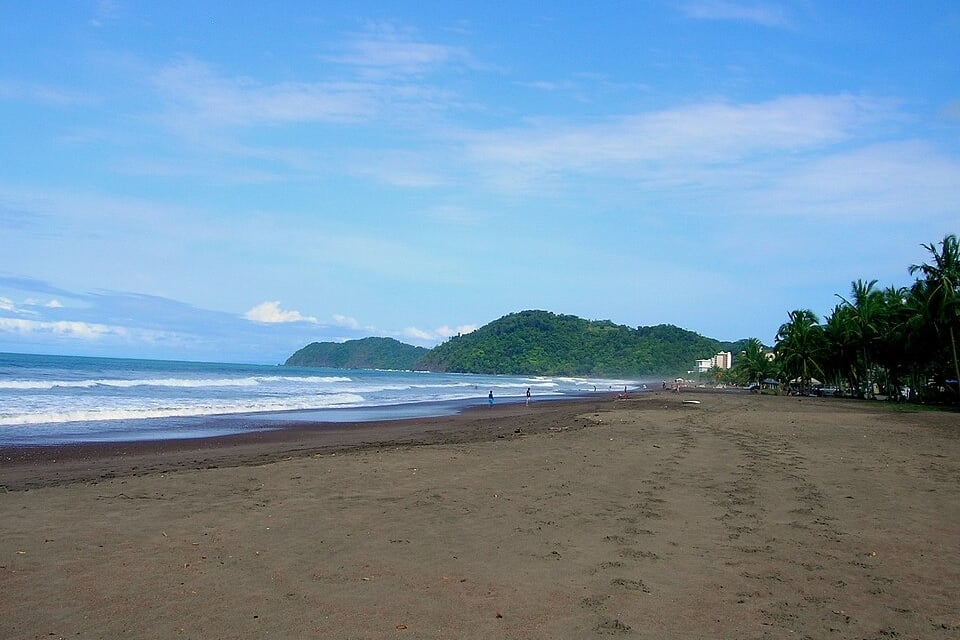

Jaco beach Costa Rica Adu Costa Rica (CC BY 3.0)
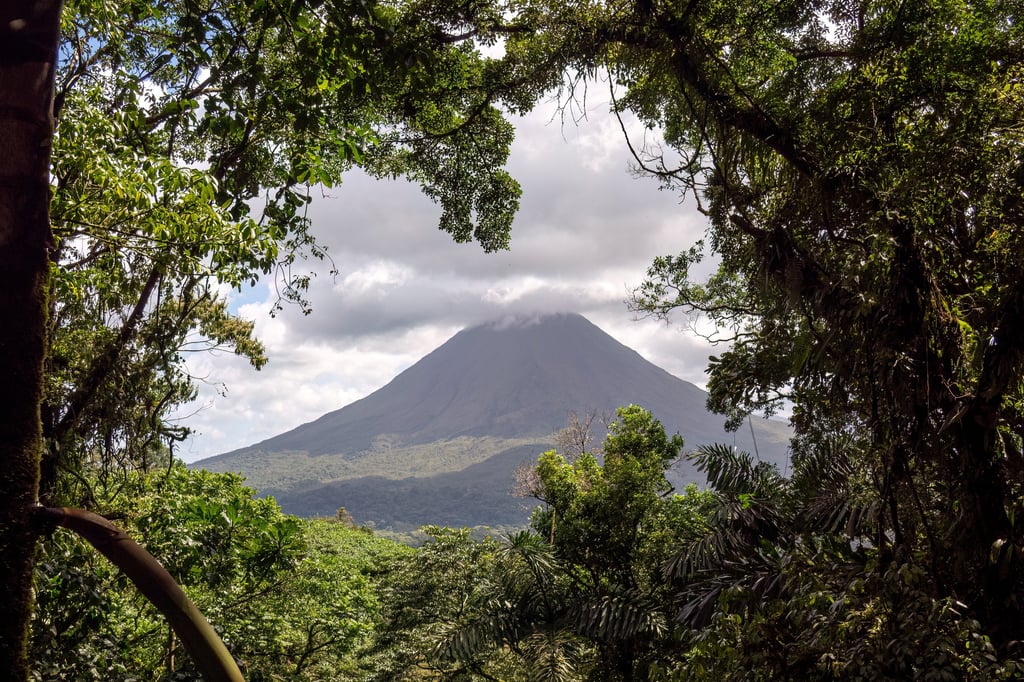

Arenal Volcano Rhododendrites (CC BY 4.0)
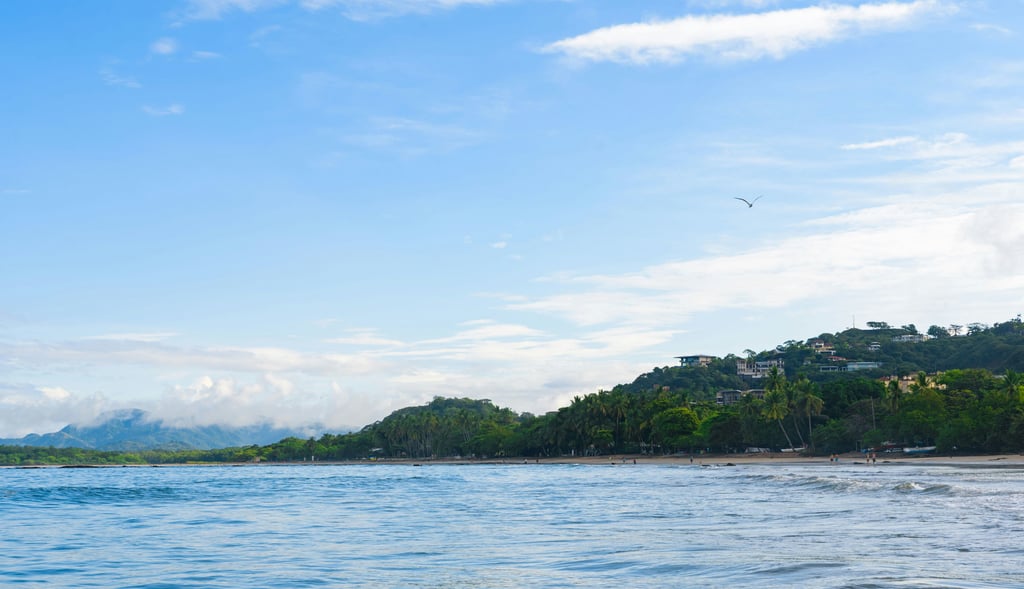

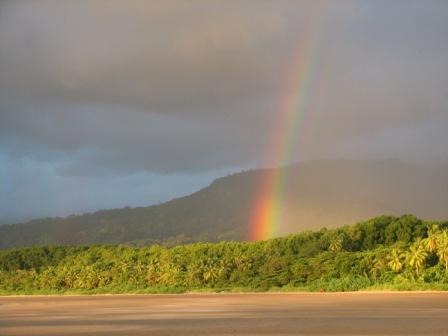



Playa - Parque Nacional Manuel Antonio (Costa Rica) Matthias Bethke (CC By 4.0)

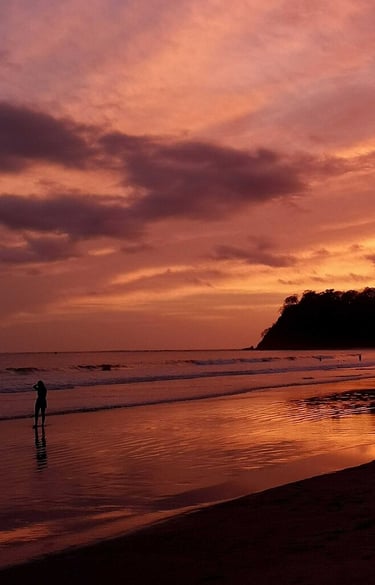
2021 Playa Samara Costa Rica enero 2021 Julian Monge- Najera (CC BY 4.0)
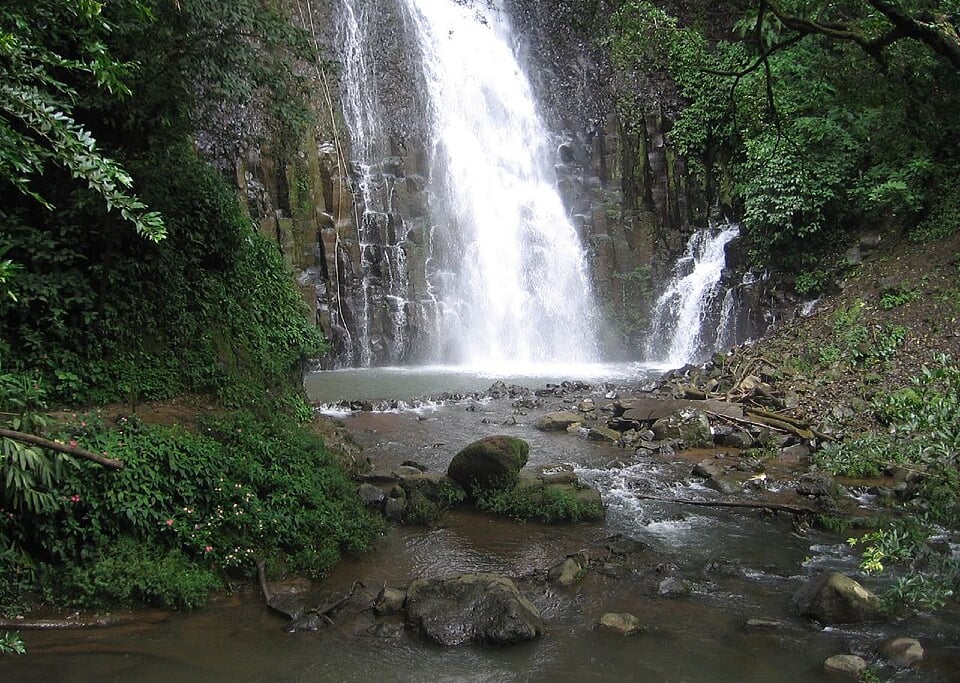

Catarata Los Chorros en el cantón de Grecia, provincia de Alajuela, Costa Rica. Rodtico21 (CC By 4.0)
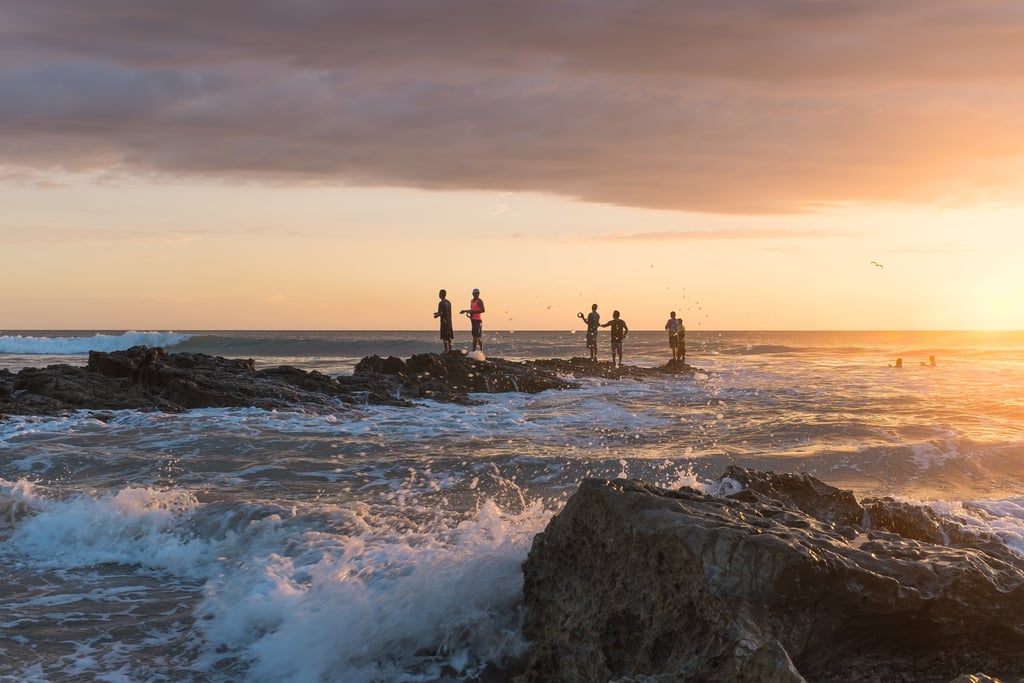

Playa Santa Teresa, Costa Rica Christopher Crouzet (CC By 4.0)
Playa Uvita en Parque Nacional Marino Ballena, Puntarenas, Costa RicaDate1/4/2007. AamadorEsp (CC By 2.0)
ExpatCostaRica.com
Your guide to thriving in Costa Rica.
Get Costa Rica insights in your inbox
Real tips, updates, and expat advice — no spam, just helpful info.
© 2025 ExpatCostaRica.com. All rights reserved.
This site is for informational purposes only and does not provide legal or immigration advice.
